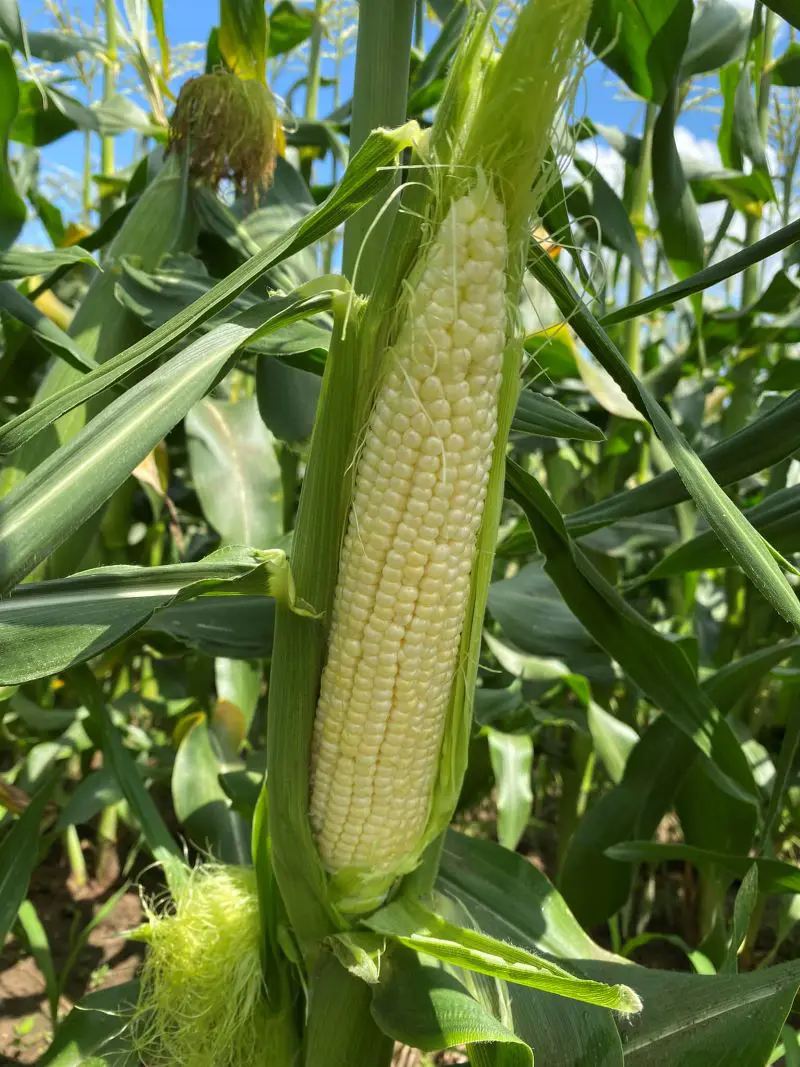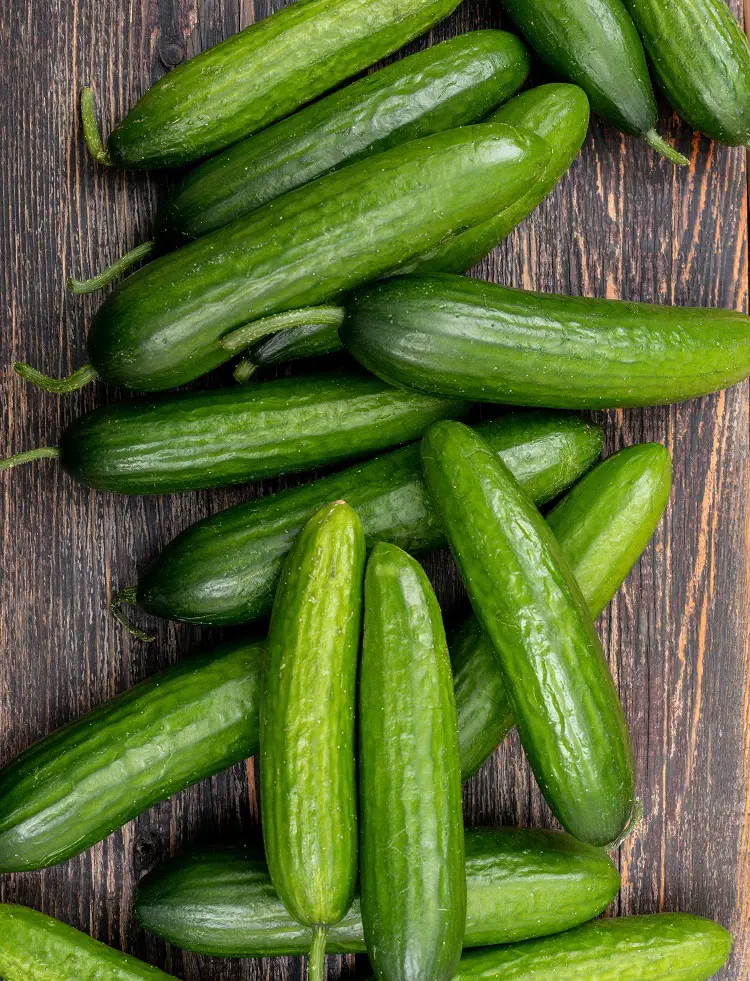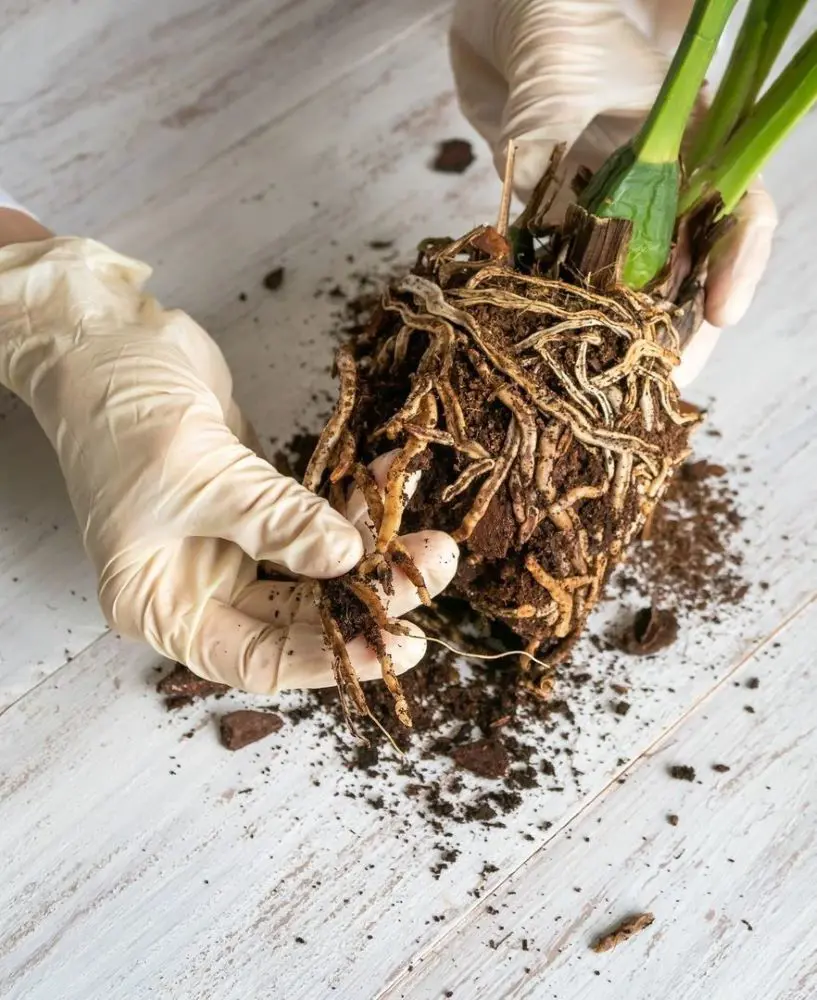How To Grow And Harvest Saffron Spice

This post may contain affiliate links. If you make a purchase through links on our site, we may earn a commission.
Saffron, often referred to as "red gold," is one of the most valuable and sought-after spices globally. Cultivating saffron for its spice involves meticulous care and labor-intensive processes.
While saffron crocus can be grown in home gardens, it is not considered an easy plant to cultivate for spice production. However, for those willing to invest time and effort, growing saffron can be a rewarding endeavor.
Saffron Overview
| Botanical Name | Crocus sativus |
| Common Name | Saffron |
| Family | Iridaceae |
| Type | Bulb, Herb |
| Size | Small, reaching up to 6-12 inches in height |
| Sunlight Requirement | Part Sun, Sun |
| Soil Type/pH | Well-drained, neutral to slightly alkaline soil (pH 6.0-8.0) |
| USDA Growing Zone | Zones 6-9 |
| Native Area | Mediterranean region, including Iran, Greece, and Spain |
What Is Saffron?
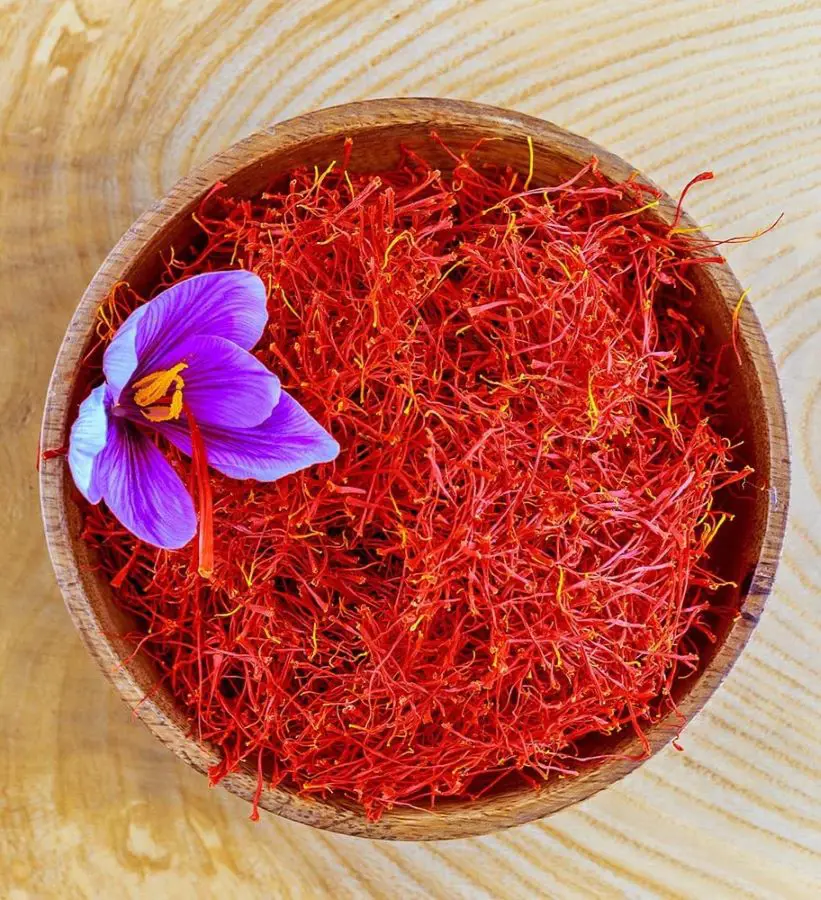
Saffron is a spice derived from the stigma of the saffron crocus (Crocus sativus), a flowering plant in the iris family (Iridaceae). The saffron crocus is a cormous perennial herb that typically grows to a height of 6–12 inches.
The spice is extracted by carefully harvesting the stigmas by hand when the flowers bloom in autumn. Each saffron crocus flower produces only three stigmas, which must be painstakingly plucked and then dried to preserve their flavor and aroma.
It takes a large number of flowers to produce a small amount of saffron, making it one of the most expensive spices in the world by weight.
How To Grow Saffron Crocus
Growing saffron can be challenging, but it is not necessarily difficult with the right conditions and care. Saffron crocus is typically grown outdoors as it requires a specific climate and soil conditions to flourish. It is cultivated in regions with mild winters, hot and dry summers, and well-drained, fertile soil.
The flower is commonly grown in large fields or plots of land in regions with suitable climates, such as the Mediterranean region, including Iran, Greece, and Spain.
In the United States, saffron is grown in states like California and parts of the Pacific Northwest, where the climate is conducive to saffron cultivation.
Saffron Care
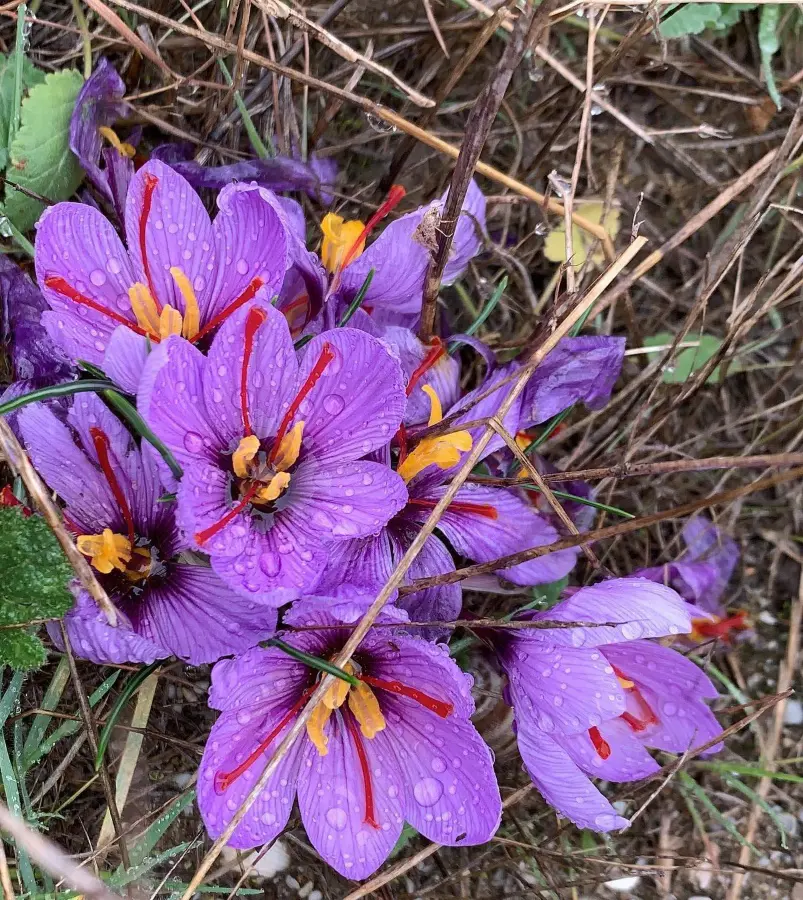
Caring for saffron crocus is relatively straightforward, and they are not particularly difficult to care for after planting. However, without proper care, this plant may struggle to establish roots, produce fewer flowers, or even fail to bloom altogether.
Inadequate sunlight, overwatering, or poor soil drainage can also lead to problems such as root rot or fungal diseases, which can ultimately impact the plant's overall health and longevity.
Light
Saffron crocus loves bright sunlight outdoors. Gardeners often plant them close together, around 50 bulbs per square meter, in rows on planting beds. They are "short-day" plants, which means they grow faster during day with more than 12 hours of darkness.
To help them bloom, it's suggested that you give them about 10 hours of light each day if you're using artificial grow lights.
Soil
Saffron plants aren't too particular about the type of soil they're in, but the soil must drain well. It's best to have loamy, humus-rich soil for optimal growth.
Before planting, check the soil's pH level to make sure it's right for saffron crocuses. If needed, adjust the pH to be within the ideal range. Adding organic matter like compost or aged manure can make the soil more fertile and improve its structure.
Watering
Saffron flowers need regular watering throughout their lives. Water them when the soil feels dry, but avoid overwatering as it can cause the bulbs to rot.
During the summer, the Sativus crocus variety goes dormant and doesn't need watering. Once they're planted, they can handle moderate drought, but too much rain can harm or rot the bulbs.
Temperature
The plant thrives in temperate climates and can tolerate a wide range of temperatures. They prefer cool winters and hot, dry summers.
During the growing season, temperatures between 60 and 80°F (15 and 27°C) are ideal. Saffron crocus bulbs can tolerate cold temperatures of down to -15°F (-26°C) when dormant in winter.
Humidity
Saffron prefers moderate humidity levels. While they can tolerate dry conditions, they may benefit from increased humidity during the growing season, especially in arid climates or indoor settings. Humidity levels between 40 and 60% are generally suitable.
Fertilization
Saffron growth benefits from a balanced fertilizer designed for flowering plants once a season. Organic options like bonemeal, compost, or aged manure work well. Once the plant is established, it will not need additional fertilization.
Harvesting Saffron
Harvesting saffron demands careful attention and hard work because of the delicate nature of the saffron flower and the manual extraction needed for its valuable stigmas.
It's a task that needs a lot of hands because each flower produces only three stigmas, and gathering enough saffron requires a large number of flowers.
When To Harvest
Saffron is usually collected during autumn, mainly in October and November, following the wine harvest and just before the olive harvest. The flowers are harvested every other day, starting in the early morning until midday.
How To Harvest
The harvesting process is done by hand, and the flowers are picked before they fully open. The stigmas are carefully removed from the flower using tweezers or by hand, and the yellow stamens and purple flowers are discarded. The stigmas are then dried to maintain their color and flavor after being cut from the plant.
The saffron flower is incredibly fragile, and its strands must be handled on the same day they're harvested to prevent them from losing their quality. This fragility adds to the complexity and care needed during the harvesting process.
Storing Saffron
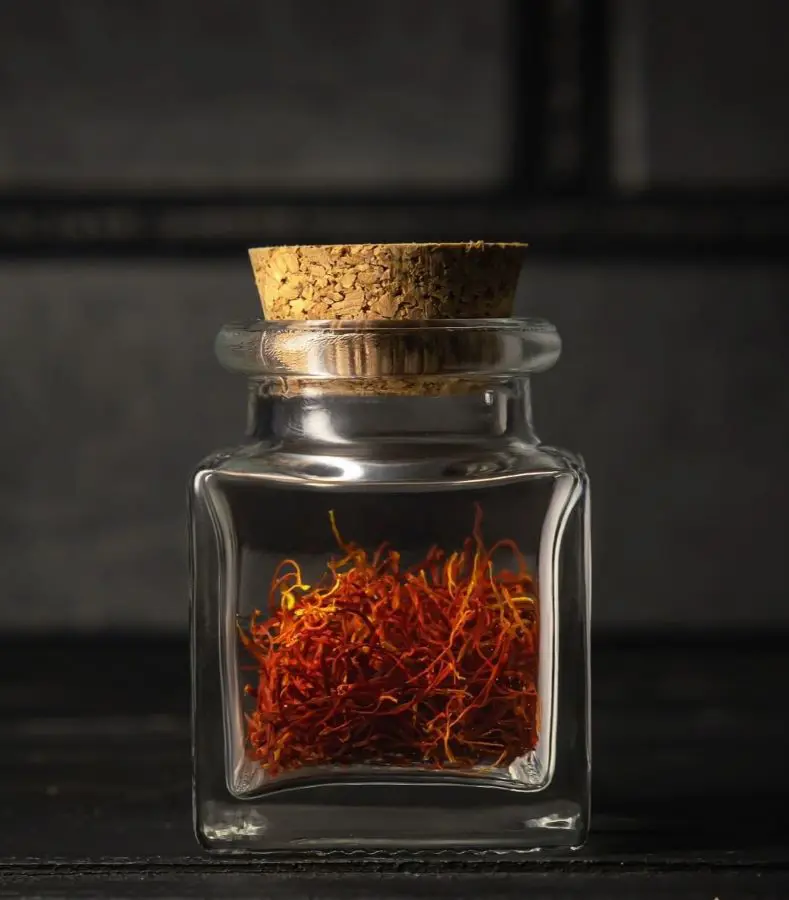
After harvesting saffron, the next step is to properly dry and store the stigma threads to preserve their flavor and aroma. To keep saffron fresh and flavorful, it's important to store it properly. Here's how:
- Use an airtight container, like a glass jar or vial, with a tight lid.
- Keep saffron away from light and heat as they can make it lose its aroma and nutrients.
- Avoid humid environments that could make saffron damp and spoil.
- Label the container with the storage date and lot number for easy tracking.
When stored well, saffron can stay good for many years without losing its flavor. Check saffron quality before buying, and opt for whole stigma threads to reduce the risk of getting fake products.
Propagating Saffron
Propagating saffron is possible, but it's not as common as other methods of growing, such as harvesting and replanting corms or bulbs. These plants are mainly propagated by dividing mature corms instead of using advanced methods like tissue culture.
Here's a typical way of propagating saffron through corm division:
- Pick healthy, mature corms from existing plants.
- Cut the corms into smaller pieces, making sure each piece has at least one growing point (eye).
- Let the cut corms dry a bit for a few days to encourage calluses, which helps prevent decay when transplanting.
- Plant the divided corms in well-draining soil with a pH of 5.5–8.5, following the usual saffron planting guidelines.
- Keep the newly planted corms moist but not too wet, avoiding excessive watering.
- Position the corms in a sunny spot, protecting against extreme temperatures and wind.
- Once the new corms mature, they can be harvested and replanted to keep the propagation going.
Growing Saffron In Pot
Saffron is primarily grown outdoors in large fields or plots. However, it is possible to grow it indoors in containers or pots in regions where the outdoor climate is not suitable.
Indoor cultivation requires providing the plant with adequate sunlight, well-drained soil, and proper care to mimic its preferred outdoor growing conditions. However, indoor cultivation may yield smaller harvests compared to outdoor cultivation due to space limitations and the need for artificial lighting.
- Use well-draining soil with a pH of 5.5–8.5.
- Choose a pot that is at least 12 inches wide and deep.
- Plant corms 12–15 centimeters deep, spaced 10 centimeters apart.
- Place the pot in a sunny area with 6 hours of sunlight daily.
- Water lightly, apply balanced fertilizer yearly, or use compost.
- Harvest flowers as they open, carefully picking stigmas.
Winter Protection
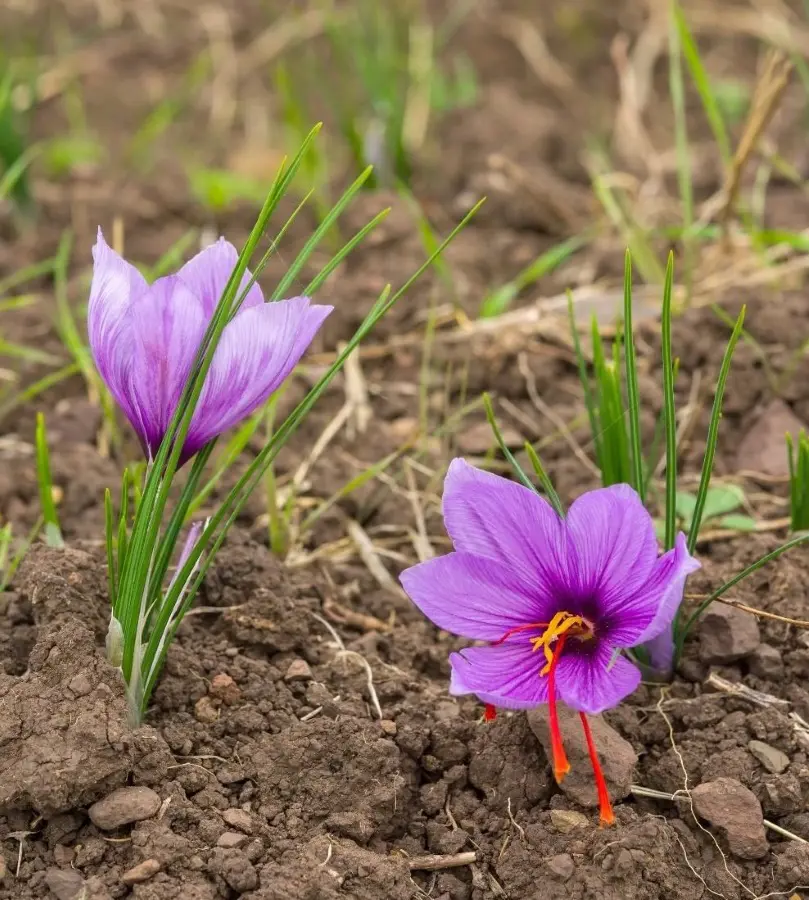
Saffron thrives in USDA plant hardiness zones 6 to 9, which include regions with moderate climates. However, saffron can tolerate some cold and is hardy down to USDA Zone 6, where winter temperatures can drop to around -10°F (-23°C).
In colder climates, saffron can be affected by freezing temperatures, which may damage or kill the corms if left unprotected. To protect saffron from cold weather, you can take several measures:
- Mulching: Apply a layer of mulch around the saffron plants in late fall to insulate the soil and protect the corms from freezing temperatures.
- Covering: Use frost blankets, row covers, or cloches to cover the plants during frost or freezing nights to trap heat and protect them from cold damage.
- Bringing Indoors: If grown in pots or containers, consider bringing saffron indoors during periods of extreme cold to protect it from freezing temperatures.
- Planting Location: Plant saffron in a sheltered location, such as near a building or under the canopy of trees, to provide some protection from cold winds and frost.
Saffron Crocus Types
Saffron is primarily grown for its valuable spice, which is harvested from the stigmas of the saffron crocus flowers. The spice, known for its distinct flavor, aroma, and vibrant color, is widely used in culinary dishes, particularly in rice dishes, soups, sauces, and desserts.
Types of saffron crocus that can be grown for spice, include:
- Crocus sativus: This is the most commonly cultivated species for saffron production. It produces the highest quality saffron spice and is grown commercially in regions with suitable climates.
- Crocus cartwrightianus: Also known as "wild saffron," this species is less commonly cultivated but still produces saffron spice. It is sometimes used as a substitute for Crocus sativus in regions where it is difficult to cultivate.
Common Pests and Diseases
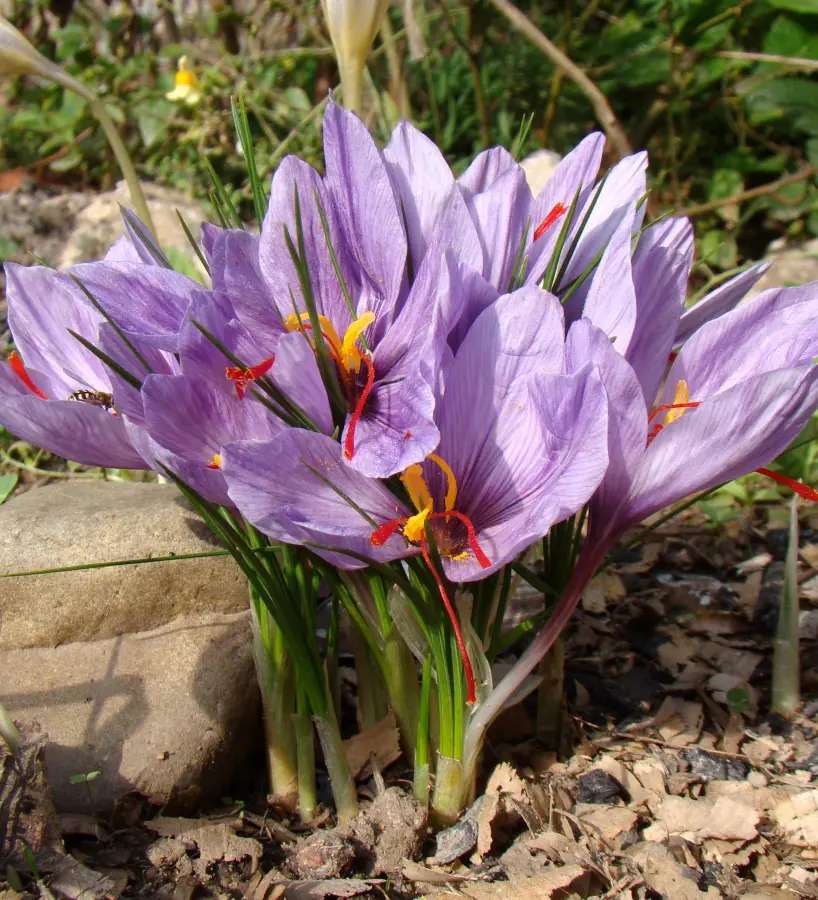
Saffron plants can be harmed by different pests and diseases, which can affect their growth and productivity.
Some typical pests that attack saffron plants include:
- Rodents: Porcupines, mice, moles, rabbits, and voles nibble on saffron leaves and corms during cold winters below 32°F.
- Insects: Examples include thrips, which lay eggs inside plant tissues, causing white and yellow spots on leaves, and blister beetles from the Meloidae family.
- Plant mites: Saffron bulb mites (Rhizoglyphus robini) invade saffron corms through wounds, creating tunnels and spaces for reproduction.
For diseases, saffron plants can suffer from:
- Corm Rot: Dry rot, brown rot, yellows, and blight, is caused by various organisms like Fusarium, Rhizoctonia, Aspergillus, and Penicillium.
- Bulb Rot: This disease affects the entire corm, usually due to pathogenic fungi.
- Leaf Spot: Various fungal agents cause leaf spots, leading to discolored patches on leaves.
Recent posts
How To Grow
How To Grow
How To Plant, Grow And Harvest Corn All By Yourself
Growing your popcorn or sweet corn at home garden can seem like an interesting idea. However, it requires a large amount of space to grow as it is a tall plant that needs plenty of room to spread out. But, if you want to enjoy freshly popped po...
How To Grow
How To Plant, Grow And Care Cucumbers
Growing cucumbers is like going on a fun journey where you get to plant and pick your very own crunchy veggies. It's not just about having tasty cucumbers, it's also about the joy of seeing your plants grow. Whether you have a big garden or a small b...
